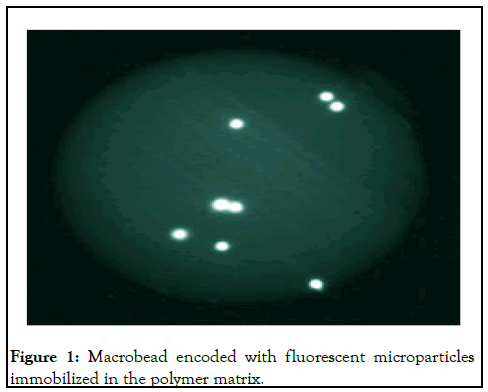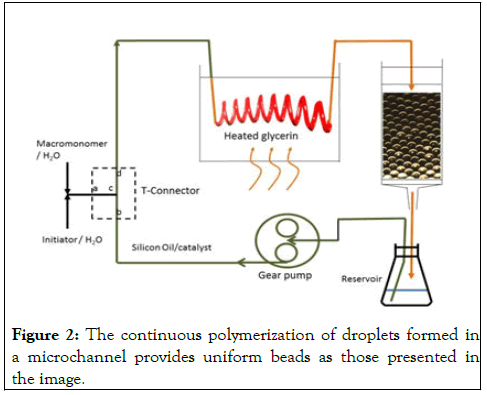Journal of Physical Chemistry & Biophysics
Open Access
ISSN: 2161-0398
+44 1478 350008
ISSN: 2161-0398
+44 1478 350008
Image Article - (2024)Volume 14, Issue 3
Tailoring resins is a prerequisite for performing assays on solid support. PEG-based resins, SPOCC, POEPOP, PEGA, ChemMatrix and other have shown particularly favorable properties in this regard because the unmodified resins show no interaction with biomolecules or cells and they have no absorption or emission of light [1]. PEGA resins are particularly promising in this regard, since the swell 15-20 fold even in salt containing buffers used in bioassays and their polymer matrix is penetrated with proteins up to at least 70 kD. They swell evenly well in non-polar solvents used in synthesis of small molecule ligands [2]. These resins have been equipped with cell binding ligands to form cell monolayers used in combinatorial one-bead-two-compound screening of GPCR’s interacting with ligand libraries on the support [3]. Here we present a novel sustainable large scale microchannel synthesis of highly regular PEGA beads for use in screening and precise binding assays. The continuous flow-synthesis equipment was composed from standard laboratory items and allowed the “green” production of precisely monosized beads with controlled size in 90% yield for all use even for a larger solid-phase synthesis laboratory [4]. The synthesis is performed by inverse radical suspension polymerization in a limited amount of recirculating silicon oil and creates no waste. Furthermore, the beads could be MPM-encoded with a matrix of fluorescent tentagel microparticles anchored during the radical polymerization in the polymer matrix for rapid assessment of structure-activity in combinatorial libraries. The monosized beads also allowed well-based or microchannel determination of protein binding constants in a robust, easy-to-use, inexpensive binding assay using a standard fluorescence microscope [5]. The properties of the resins can be tailored by additives in the radical polymerization to match any requirement of the screening processes (Figures 1 and 2).

Figure 1: Macrobead encoded with fluorescent microparticles immobilized in the polymer matrix.

Figure 2: The continuous polymerization of droplets formed in a microchannel provides uniform beads as those presented in the image.
[Crossref] [Google Scholar] [PubMed]
[Crossref] [Google Scholar] [PubMed]
[Crossref] [Google Scholar] [PubMed]
[Crossref] [Google Scholar] [PubMed]
[Crossref] [Google Scholar] [PubMed]
Citation: Meldal M (2024) 3D-PEG-Based Resin Tailored for Chemical Biology and Cell Studies: MPM-Encoded Beads. J Phys Chem Biophys. 14:381.
Received: 03-Aug-2020, Manuscript No. JPCB-24-5839; Editor assigned: 06-Aug-2020, Pre QC No. JPCB-24-5839 (PQ); Reviewed: 20-Aug-2020, QC No. JPCB-24-5839; Revised: 03-Jun-2024, Manuscript No. JPCB-24-5839 (R); Published: 30-Jun-2024 , DOI: 10.35841/2161-0398.24.14.381
Copyright: © 2024 Meldal M. This is an open-access article distributed under the terms of the Creative Commons Attribution License, which permits unrestricted use, distribution, and reproduction in any medium, provided the original author and source are credited.